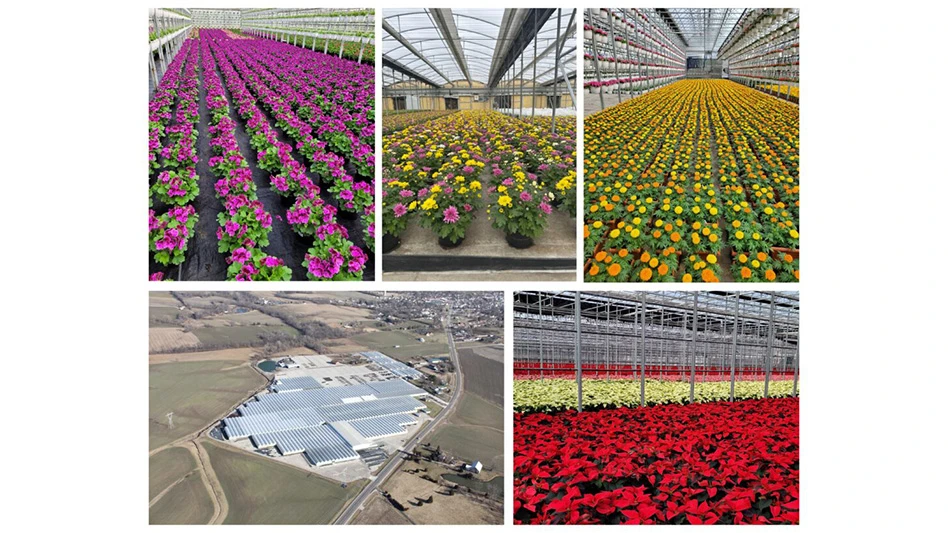
Proper management involves determining the optimal levels of inventory to meet customer demand while avoiding overstocking or stockouts. It includes forecasting demand, setting reorder points and determining economic order quantities. Keeping track of inventory levels in real time is essential for effective inventory management.
Benefits of inventory management
There are a few key areas where managing inventory can help a business succeed. They range from simply reducing waste to helping products last longer.

Reducing waste
Efficient inventory management helps minimize waste by ensuring that items are not overproduced or overstocked, which can lead to excess inventory and eventual waste. By accurately forecasting demand and maintaining lean inventory levels, businesses can reduce the amount of unsold or obsolete inventory that may end up in landfills.
Lowering carbon footprint
Inventory management practices such as just-in-time (JIT) inventory and supply chain optimization can help reduce transportation and storage-related emissions. JIT practices, for example, involve ordering and receiving inventory only when needed, which can decrease the frequency and volume of shipments and the associated carbon emissions.
Resource conservation
By optimizing inventory levels and reducing waste, businesses can conserve resources such as raw materials, energy and water that are used in the production and storage of inventory items. Conserving these resources contributes to environmental sustainability and reduces the ecological footprint of operations.
Extended product life cycles
Effective inventory management can help businesses extend the life cycle of products by reducing the likelihood of overstocking and markdowns, which can lead to premature disposal or obsolescence. By selling products at full price and avoiding unnecessary discounts, businesses can maximize the value of inventory and minimize the environmental impact associated with disposal.
How often should you check your inventory?
Growers should be ground-truthing their living plant inventory once or twice a week, though there is no official rule. Ground-truthing is a technical term that means to match spreadsheet inventory numbers with the actual inventory present in the greenhouse or in storage areas. Generally, the more inventory that a grower keeps, the more often they should be ground-truthing the accuracy of the species’ quantity (as plants can die due to abiotic or biotic conditions throughout the season), number of plants per cultivar growing and if the growing schedule of the plant is on track to be ready by the sale week, since this can change based on weather conditions.
Key areas of inventory
These three key areas are used as a basis for planning work schedules, labor needs, space requirements and supplies needed. They are also needed when planning production programs, calculating costs of production and developing pricing strategies. Lastly, their influence on cultural practices and their impact on inventory turns can be evaluated for business efficiency.
Plants
- How many plants of each variety or cultivar are available?
- What is the size of their containers?
- Where is their location within the greenhouse operation?
Taking the physical plant material inventory is facilitated by developing an integrated layout of the greenhouse operation using plant blocks and labeling benches or rows. The count is made by trained individuals using plant inventory schedule sheets or electronic recorders.
Equipment
- Cars, trucks, tractors, potting machines, pumps, injectors and irrigation equipment, sprayers and storage equipment
- Hand tools
- Computers and technology
Some form of management control must be maintained over the equipment if the greenhouse is to maintain a physical inventory of all equipment and to develop plans for security, proper use and maintenance.
Hard goods and other supplies
- Items necessary for certain phases of production (propagation, planting and harvesting), such as seed flats, labels, containers, fertilizers, media, PPE, controlled chemicals, nozzles, hoses, etc.
- Equipment maintenance supplies
For the entire inventory management report, click here.
This article appeared in the February 2025 issue of Greenhouse Management magazine under the headline "Make it count."

Explore the February 2025 Issue
Check out more from this issue and find your next story to read.
Latest from Greenhouse Management
- Terra Nova Nurseries introduces rust-free and disease-resistant heucherella
- John T. Nickel, founder of Greenleaf Nursery Co., passes away at 89
- Three tours offered at 2025 Farwest Show
- Garden Media Group announces sixth annual Women in Horticulture Week
- Star Roses and Plants announces National Knock Out Rose Day
- The Growth Industry Episode 4: How federal budget cuts are affecting horticulture nonprofits
- The thrips battle plan
- Pennsylvania Horticultural Society shares top gardening trends from 2025 Philadelphia Flower Show





